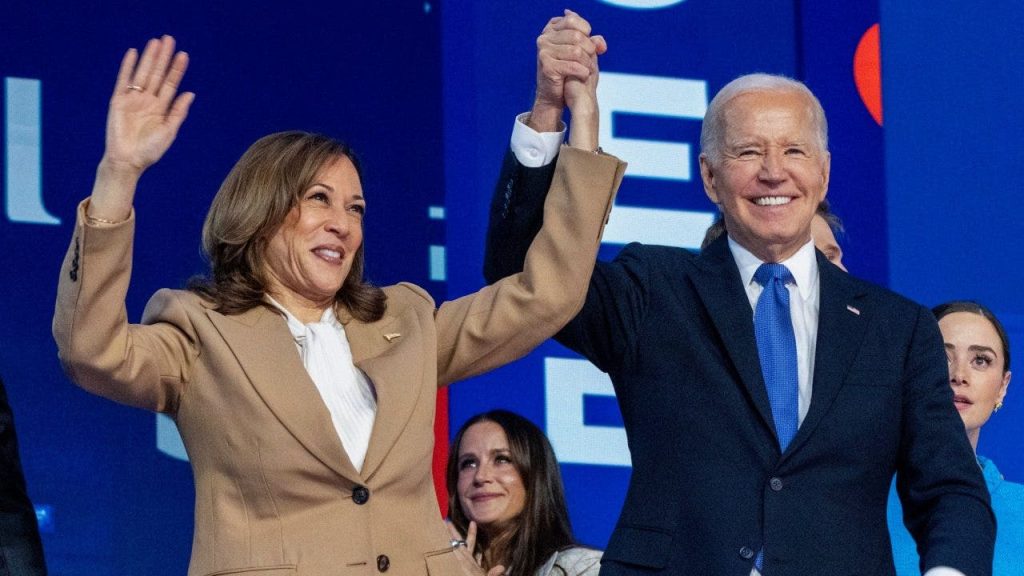More than six months after significant setbacks in the 2024 elections, the Democratic Party is urgently seeking a strategy to reconnect with voters, particularly focusing on male and working-class demographics. Following President Donald Trump‘s return to the White House, Democrats are grappling with low approval ratings and are under pressure from their base to tackle issues head-on. A recent convening of party consultants and donors aimed to analyze outreach efforts, indicating a critical moment for the party as it tries to redefine its message and improve voter engagement.
| Article Subheadings |
|---|
| 1) Democrats’ Struggles in Recent Elections |
| 2) Need for Course Correction |
| 3) Strategy Gathering Highlights |
| 4) Concerns Over Outreach Tactics |
| 5) Future Implications for Democratic Party |
Democrats’ Struggles in Recent Elections
In the aftermath of the 2024 elections, which yielded disappointing results for the Democratic Party, officials are revisiting their strategies to regain footing. The elections saw President Donald Trump reclaim the presidency, alongside Republicans successfully flipping the Senate and maintaining control over the House. The party not only lost a significant number of traditional voters but also witnessed an alarming shift among demographics that have typically supported Democratic candidates. The erosion of support among Black, Hispanic, and younger voters has left the party with a pressing need to re-evaluate their message and campaign strategies.
Need for Course Correction
Amid growing discontent within the party, veteran Democratic strategist Joe Caiazzo emphasized the necessity for recalibration. “Everything we’ve done up to this point has resulted in re-electing Donald Trump,” he said. Caiazzo’s remarks reflect a consensus among many Democrats who feel that the current direction does not align with the needs and desires of the electorate. The internal frustrations among party members signal a growing call for effective leadership in opposing Trump and resonating with voters dissatisfied with the current political climate.
Strategy Gathering Highlights
In response to the urgent need for a fresh approach, a gathering of prominent party consultants and donors took place recently, co-hosted by the Democrat-aligned super PAC Future Forward at an upscale California resort. Central to discussions was a $20 million initiative titled “Speaking with American Men: A Strategic Plan.” This initiative is designed to tackle the gap in male voter support, which has historically favored Republicans in recent elections. The initiative’s recommendations include a shift away from “moralizing tones” that may alienate male voters, suggesting a revision in the language used and emphasizing advertisement on platforms where men are engaged, like video games.
Concerns Over Outreach Tactics
While recognizing the importance of targeting male voters, critics within the party have raised eyebrows about the approach being proposed. Key figures from the previous Democratic campaigns expressed dissatisfaction with what they termed superficial tactics. James Singer, a spokesperson for the 2024 campaign, lamented, “Instead of studying working-class voters and men, why doesn’t the Democratic Party donor class go out and meet some? What the hell is this?” His exasperation encapsulated the sentiment shared by several party members, highlighting a disconnect between traditional outreach methods and real-world engagement.
Future Implications for Democratic Party
As the Democratic Party grapples with its identity and electoral strategy, it’s clear that comprehensive efforts will be required to regain trust among voters. The current polling landscape is dire, with diminishing approval ratings reflecting deep-seated issues within the party structure itself. Recent polling data indicate record low favorability for the party, with a notable 41% favorability rating compared to a steep 56% unfavorable rating, marking a significant shift from previous years. These changes compel the Democratic leadership to broaden their focus beyond a select group of issues that may only resonate with a limited audience.
| No. | Key Points |
|---|---|
| 1 | Democrats face challenges after losing the 2024 elections. |
| 2 | Calls for course correction and stronger leadership are increasing. |
| 3 | A new $20 million initiative aims to reach male voters more effectively. |
| 4 | Criticism arises regarding the proposed outreach strategies. |
| 5 | Record low favorability ratings for the Democratic Party need urgent address. |
Summary
The Democratic Party is at a crucial juncture as it seeks to redefine its strategy following a disappointing electoral performance in 2024. With low approval ratings and challenges in engaging key voter demographics, party leaders are tasked with analyzing and implementing effective strategies aimed at revitalizing their message and outreach efforts. The stakes are high, and the push for a comprehensive reevaluation indicates an acknowledgment that mere tactical adjustments may not suffice; a fundamental transformation may be needed to reconnect with disenchanted voters and foster a broader coalition moving forward.
Frequently Asked Questions
Question: What challenges did the Democratic Party face in the 2024 elections?
The Democratic Party faced significant setbacks, with President Donald Trump regaining the presidency and Republicans flipping the Senate while maintaining control over the House. This was compounded by losses among demographic groups that traditionally support Democrats, including Black, Hispanic, and younger voters.
Question: What is the ‘Speaking with American Men’ initiative?
The ‘Speaking with American Men’ initiative is a $20 million strategic effort aimed at improving outreach to male voters, who have historically favored Republicans. It includes suggestions to alter the language used by Democrats and enhance advertising across platforms popular with male audiences.
Question: How low are the approval ratings for the Democratic Party?
Recent polling indicates record low favorability ratings for the Democratic Party, standing at 41% favorable and 56% unfavorable. This presents a concerning shift in public perception and further emphasizes the need for the party to reengage with voters effectively.


